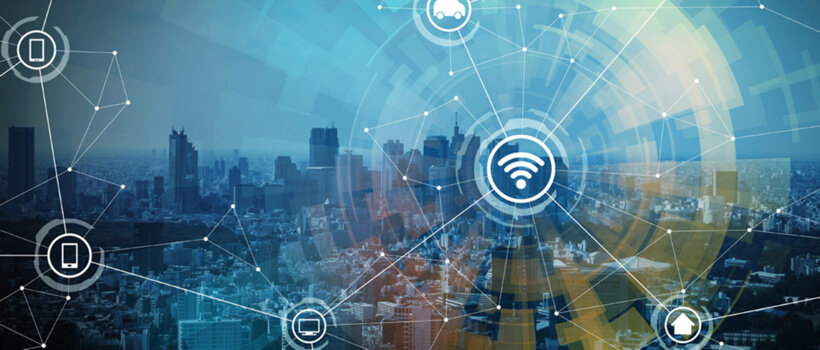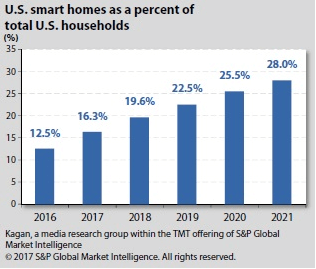
The Internet of Things (IoT, as we commonly know it), is a technology that conjures images of endless possibilities as well as inspires fantasy concepts of machines becoming more human-like, taking over the world and many such from the realms of sci-fi. However, as the new decade dawns, IoT is making its presence felt in more areas than ever. To an extent that’s eliciting quotes such as these from eminent personalities:
“And just like any company that blissfully ignored the Internet at the turn of the century, the ones that dismiss the Internet of Things risk getting left behind.” — Jared Newman
“If you invent a breakthrough in artificial intelligence, so machines can learn, that is worth 10 Microsofts.” — Bill Gates
So what exactly does the advancement of IoT have in store for us in 2020? Let’s take a look at the top trends and projections:
- A World of Connected Devices: 42 Billion and Counting: Devices we use daily are getting smart capabilities and gearing up to do more and generate more data than ever. The International Data Corporation (IDC) estimates we will have upwards of 42 billion connected devices by 2025, generating 79.4 zettabytes of data. With that kind of information, imagine what businesses can do in terms of getting to know their customers better and improving their experience by leaps and bounds.
- “Informed” Surroundings: Our cities and towns are poised to learn and take advantage of increasingly sophisticated sensors, data processing and AI to make certain decisions without human intervention. This development, leading them to become what we term “smart cities”, will be driven by IoT in a big way. Our traffic lights will be more aware in monitoring driving patterns, cameras will take autonomous action should emergencies present themselves and electricity, water and other resource meters will optimise their performance for a greener future.
- Smarter Homes: All the gadgets and their extra capabilities are favorites of the millenials who love the various ways in which they make lives easier. Besides getting smarter, they are also getting more affordable. Thus, sales of various “things” constituting the “Internet of Things” are on the rise and it’s estimated that in the US alone, the number of “smart” homes will reach 28% of the total number of households by 2021. Such devices will bring about power savings, added security and the convenience of auto detecting problems and taking corrective actions.
- Personalised Services, Courtesy Data:
 As mentioned in the first point, the amount of data generated by IoT will be humongous. With data analysis getting better and yielding more actionable insights, one can learn a whole lot about every step of their customer’s journey, usage patterns, device performance and more. With that knowledge, companies can increasingly provide more personalised services, take proactive action and streamline their customer experience to inspire greater loyalty and revenue
As mentioned in the first point, the amount of data generated by IoT will be humongous. With data analysis getting better and yielding more actionable insights, one can learn a whole lot about every step of their customer’s journey, usage patterns, device performance and more. With that knowledge, companies can increasingly provide more personalised services, take proactive action and streamline their customer experience to inspire greater loyalty and revenue
- Edge Computing for Greater Efficiency: While processing huge volumes of data is important, it’s also imperative that it happens quickly for faster automation. As we see more traction on self-driving cars and other gadgets that are supposed to make quick decisions, instead of sending data to the cloud, they will be increasingly sent to local devices at the edge of the network so it can be analysed and acted upon faster. Currently, around 10% of data generated by the enterprise is processed through edge computing, but by 2025, this will increase to 75%.
- From Agriculture to Agritech: One of the greatest advantages of IoT lies in its capability to help farmers increase their yield and make informed decisions about planting and rearing crops. Smart farming, as it is increasingly being called, is making a big difference in livestock monitoring, predicting climate conditions and best practices, crop monitoring and administering fertilizers and pesticides using drones, among others. The global shipment of IoT devices for agriculture is expected to reach $75 million by the end of 2020.


- Build Secure: With IoT devices selling in millions and the data being generated by them, the question of security is paramount. The new decade, therefore, will see a lot of focus on IoT security and robust architectures to prevent data thefts will be implemented. Enterprises looking for an IoT solutions partner will be asking for increased security measures for smart devices and development with such protocols in mind will be extremely beneficial for service providers.
- Getting Ahead of Schedule: As devices get smarter, they’ll be able to remind users about maintenance, predict malfunctions with greater accuracy and help avert disasters in time. Gas pipelines, water supply systems, electricity grids and more would be able to alert administrators about leakages and outages and also shut systems down immediately to aid repairs. A boost in predictive maintenance would also help companies extend better customer service by staying up to speed with the conditions of every product.
- Advanced Healthcare: IoT in healthcare, or what’s being called the “internet of medical things”, is expected to grow at a compound annual growth rate of 26.2% to reach $72.07 billion by 2021 according to Frost and Sullivan. A lot of sophisticated technology and learning is going into smart implants, wearables, drones for medical support, virtual assistants to help patients with post-operative procedures at home, smart hospital rooms for better connectivity with staff and more, to ensure greater monitoring, accurate diagnosis and care.
- Frameworks Align: One of the greatest challenges faced by IoT is one that’s right at the core of its very existence. The lack of a platform that all frameworks can share and communicate with, has been an issue and development is now being planned to address it. We are expecting companies to create unified frameworks which will aid integration and make adoption seamless. As more organisations undergo digital transformation and experience a fundamental shift in culture and digital thought, such strategies will be increasingly in vogue and propel IoT to greater success.
Conclusion:
The areas we touched upon in this article are some that have already seen traction and therefore, a general roadmap for where things could lead, is easier to draw up. However, there are other verticals that could benefit in many ways once suitable use cases of IoT are tried and tested, and we are eagerly waiting for such developments. IoT itself, is still in its formative years with more research, applications and newer devices to come. The future looks exciting, and as an organisation speaking the digital transformation language for well over a decade, we look forward to engaging conversations in our innovation labs, solving problems in new ways and building products to shape a better tomorrow.
 1-800-805-5783
1-800-805-5783  As mentioned in the first point, the amount of data generated by IoT will be humongous. With data analysis getting better and yielding more actionable insights, one can learn a whole lot about every step of their customer’s journey, usage patterns, device performance and more. With that knowledge, companies can increasingly provide more personalised services, take proactive action and streamline their customer experience to inspire greater loyalty and revenue
As mentioned in the first point, the amount of data generated by IoT will be humongous. With data analysis getting better and yielding more actionable insights, one can learn a whole lot about every step of their customer’s journey, usage patterns, device performance and more. With that knowledge, companies can increasingly provide more personalised services, take proactive action and streamline their customer experience to inspire greater loyalty and revenue